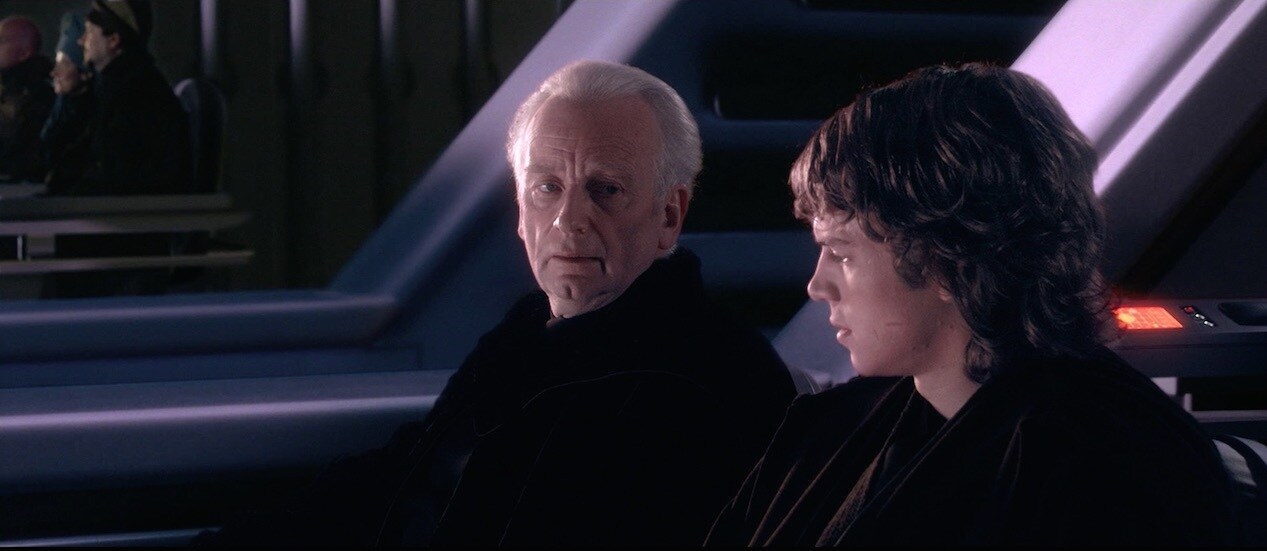Studying Skywalkers is an exclusive column that investigates the characters, themes, and lessons of Star Wars from an educational, literary perspective. In this installment, StarWars.com looks at themes in Star Wars: Revenge of the Sith.
As Star Wars fans everywhere devour the most recent trailer for Star Wars: The Force Awakens, StarWars.com continues to look at the six existing films in chronological order to reestablish pertinent themes that help to shape the saga. Up next, the film that finally revealed what ultimately pushed the promising Anakin Skywalker to become the feared Sith Lord, Darth Vader. Replete with stunning visuals, shocking revelations, and catastrophic consequences for the galaxy, Revenge of the Sith presents perhaps the most emotionally charged moments of the prequels, and defines the timeline of the Star Wars saga for the next 19 years. While there are many insightful themes, the following offer a smattering of what Revenge of the Sith brings about, and presents long term ramifications for the fictional universe.

“He’s more machine now than man.”
The catalyst for Anakin’s turn to the dark side of the Force is his fear of loss. The love he feels for his wife is genuine and earnest, and yet, when reaching out to his mentors, is told to “let go of what you fear to lose." In essence, Yoda even tells Anakin not to mourn or miss his loved ones, which, when translated literally, appears to be void of empathy or compassion for the struggling Jedi Knight. It is no wonder that Anakin is confused, as it seems he is being asked to ignore his humanity, which, ironically, he ends up doing. Yoda’s advice may have been more metaphorical in tone, and may imply letting go of worldly concerns, and trusting in the afterlife of the Force, but Anakin does not take the time to find out.
Both General Grievous and Sheev Palpatine are a living personification of this theme as well. Grievous (foreshadowing Darth Vader) is a cyborg, but is clearly more machine than organic being. His one time humanoid self is now replaced with a robotic shell that eradicates any shred of the living being he used to be. In losing that, Grievous is now free to commit atrocities in the name of the Separatist army. Grievous is separate from his former self, and it isn’t until Obi-Wan Kenobi witnesses Grievous’ heart that Grievous’ mortality is revealed, and subsequently taken away.

Evil can subvert the natural order
Joseph Campbell’s famous The Hero’s Journey features an important step in the maturation of the hero, the death of the mentor. Just as Revenge of the Sith subverts the cause of the Jedi, and turns the Order upside down, so too does the role of the father become overturned as the film roars towards its climax. In this theme, however, the death of the mentor is transposed from an outward conflict, to that of an inward battle quickly lost. Anakin does manage to lose his mentor figure in his loss of innocence regarding Palpatine. However, the true death here is the death of his ideals, and the death of his true self as Anakin. The irony here is that only by losing his mentor, and his ability to mentor his biological children, does he put into action his opportunity to be redeemed by the man who he should have mentored all along, Luke Skywalker.

Duality
On General Grievous’ flagship, Anakin captures Dooku’s lightsaber in dramatic fashion, thereby crossing both blades at the neck of the Sith Lord. The symbolism here is strong: the blue blade represents Anakin’s optimism, hope, and rationality, while the red blade (which Anakin will soon wield in another form) represents his anger, despair, and inherent violence. Both blades work in tandem, further demonstrating the conflict and dichotomy of the tragic hero.
Much can be said of Palpatine’s duality, which becomes personified once he is transformed cosmetically in his chambers during a fatal duel with Mace Windu. The lightning deflected from Mace’s purple blade disfigures Palpatine into a hideous monster. While Palpatine face is scarred, it is merely a representation of the twisted psyche of the future Emperor of the Galactic Empire. He changes before Anakin from a kindly, wise, human mentor, into a tour de force of evil. This outward change is merely a facade, to mask the duality of the individual. This dual nature helps Palpatine wreck havoc on the unsuspecting galaxy.
There are many other themes present in Revenge of the Sith not listed here. What are some of the stronger ones that speak to you? Leave your comments below!
Dan Zehr is a high school English teacher with an MS in Teaching and Learning, and runs Coffee With Kenobi (with co-host Cory Clubb), a Star Wars podcast that analyzes the saga through critical thinking, analysis, interviews, and discussion. He is also a member of The Rogues (as Blue Leader), a network of teachers that incorporate Star Wars in the Classroom.













